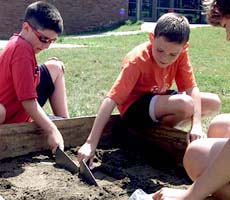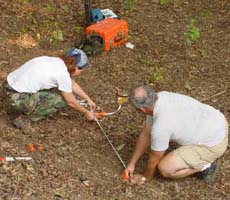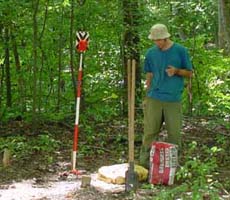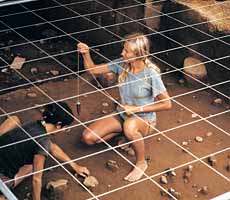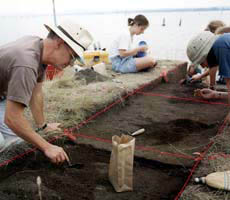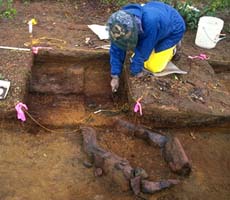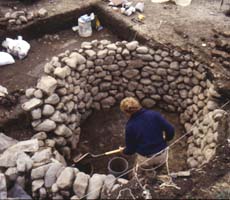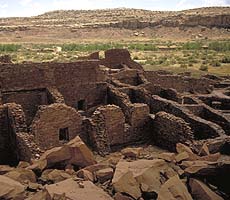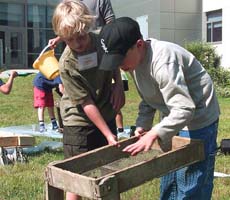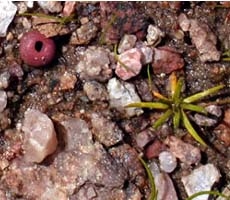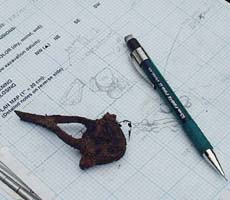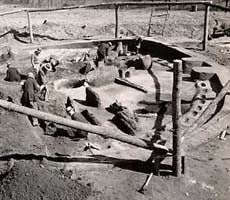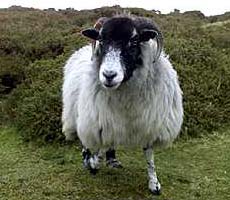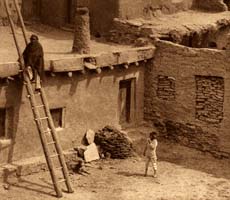
Surveys take place in fields, underwater, and even on rock
faces.
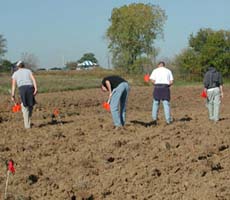
The flags mark where artifacts lay on the surface.

A ground penetrating radar system on wheels? Undergound archeological
sites, you just try to hide.
"Where do we start?" An archeologist scans a field.
A glint of white catches her eye. She bends down to see a piece of ceramic
and some rusty nails. Marking the cluster
of artifacts with flags, she keeps looking, but this looks like a good
spot to excavate.
A site survey helps archeologists narrow down where to start. They mark
likely places and dig small, but controlled, test pits to get a preview
of what they might find. Sometimes computer-driven
equipment helps them to see into the ground.
![[NPS Arrowhead]](https://cybercemetery.unt.edu/archive/oilspill/20121017032127im_/http://www.nps.gov/archeology/IMAGES/arrow.JPG)


